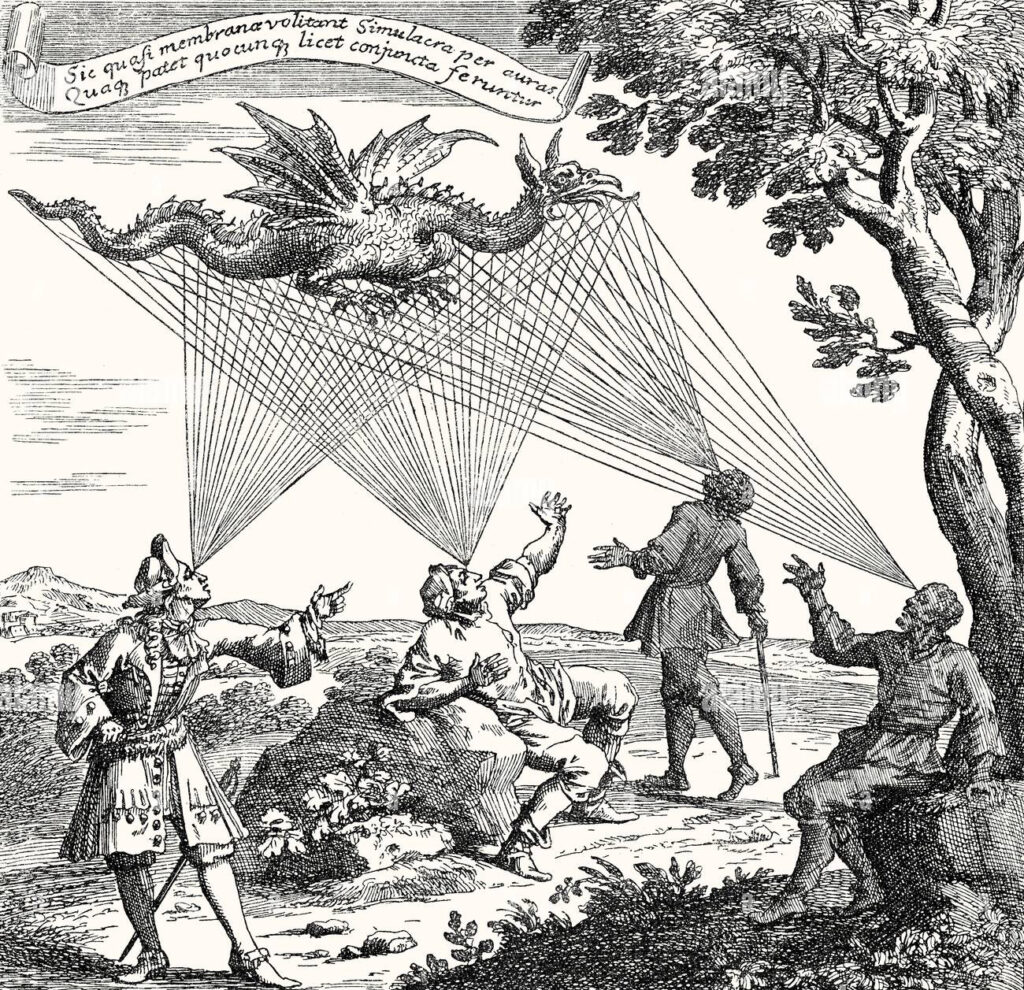
Johann Zahn oculus artificialis teledioptricus sive telescopium
In this article traditional paradigms of photographic seeing undergo scrutiny through the perspective of non-human sensory processes, notably echolocation, fostering a diverse, interspecies interpretation of vision. This inquiry unsettles the anthropocentric norms prevailing in photographic scholarship and technological innovation. Redefining “seeing” as a layered, multisensory activity extending past human limitations propels a revision of photography’s foundational assumptions, undermining the conventional dependency on light and human vision for defining the essence of photography. Incorporating non-human perspectives, like the echolocative engagements of bats and dolphins, introduces “active sensing”—an interactive engagement between emitter and receiver, shifting away from the static, observer-centric photography paradigm. This conceptual transition advocates for an engaged, participatory framework in image creation, challenging established passive viewing models. The article particularly emphasizes the implications of these insights for autonomous transportation, like Vehicle to Vehicle (V2V) communication systems, which arguably mirror biological active sensing methods. This confluence of biological senses and technological advancements not only enhances our understanding of autonomous systems but also invites a dialogue with speculative narratives from science fiction, where the fusion of organic and engineered forms of sensing often prefigures the future trajectories of technological evolution and societal adaptation.